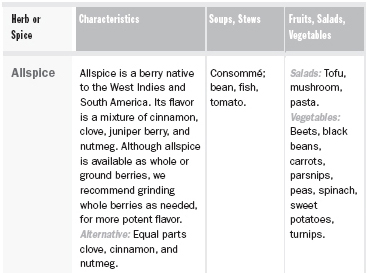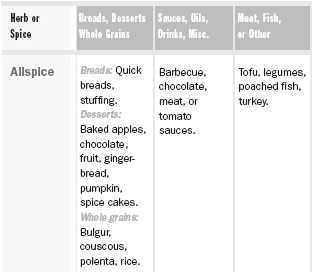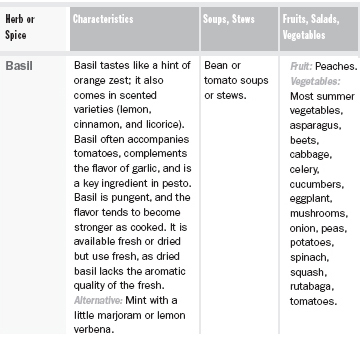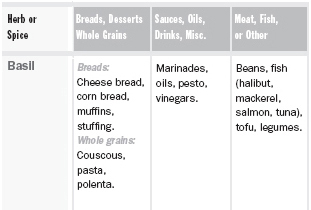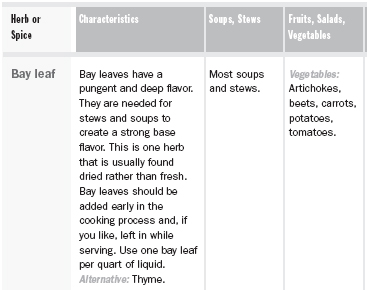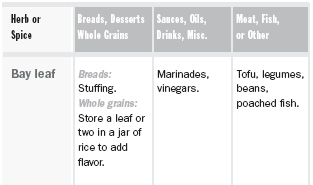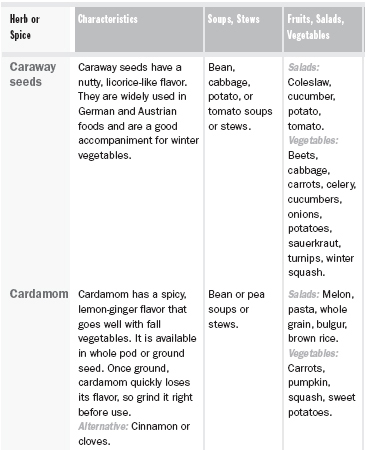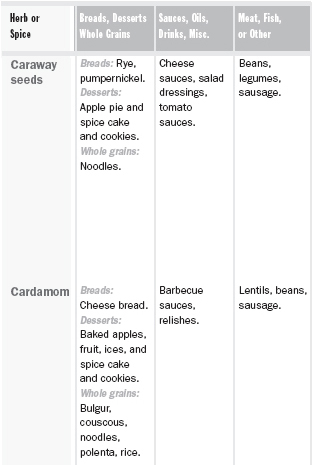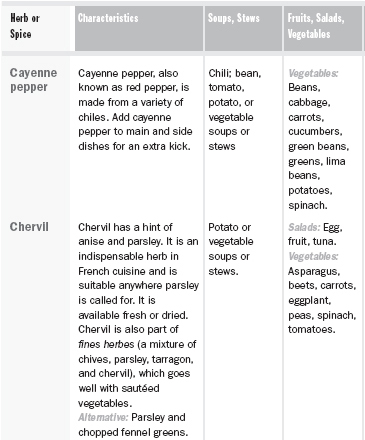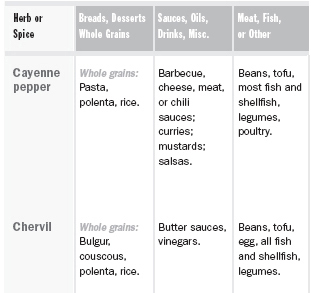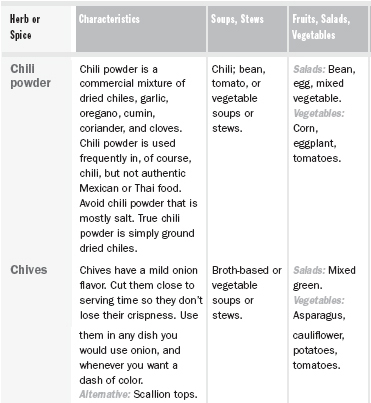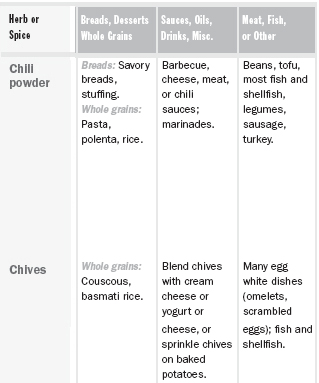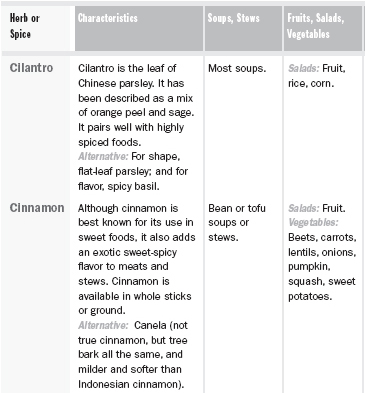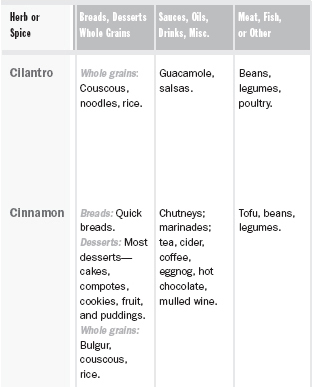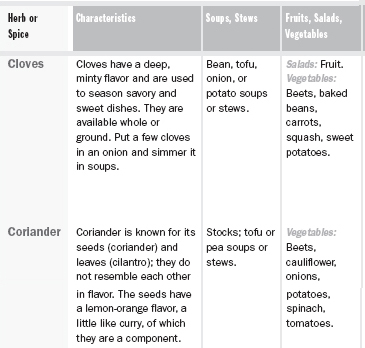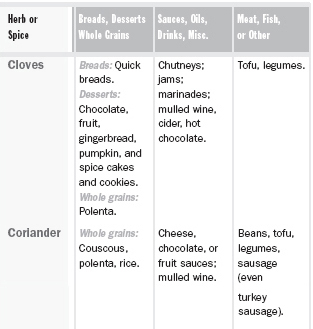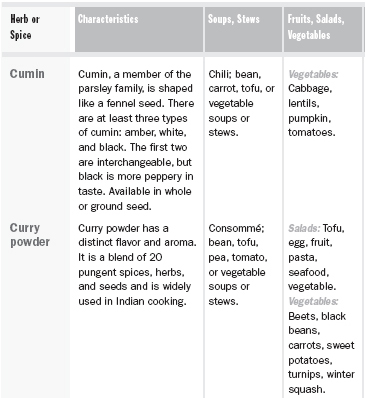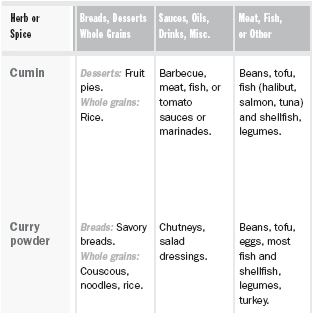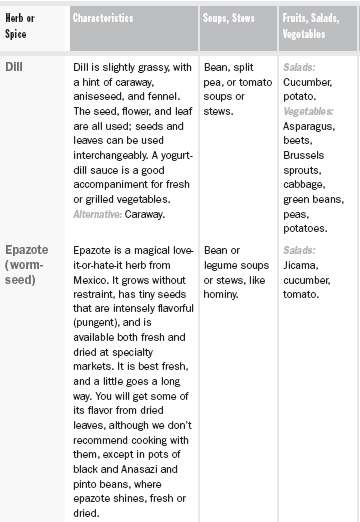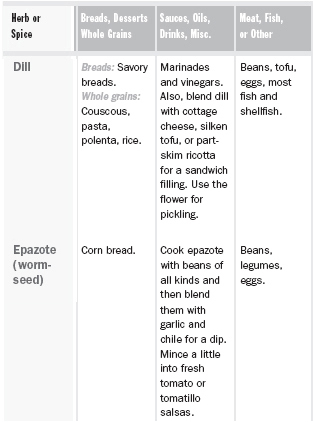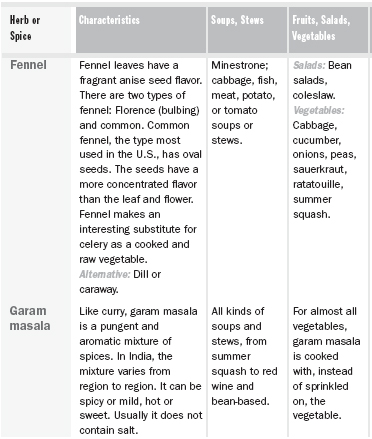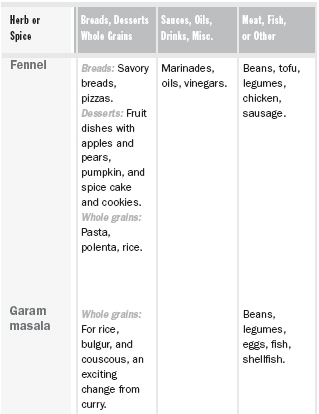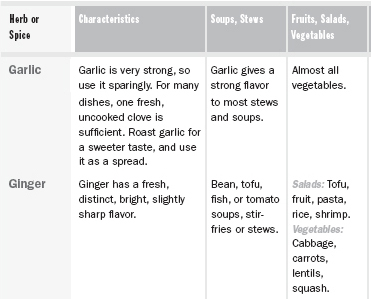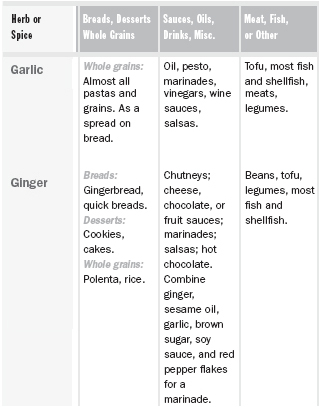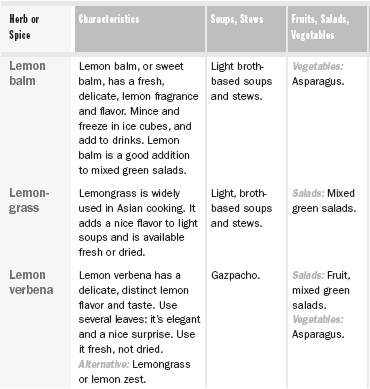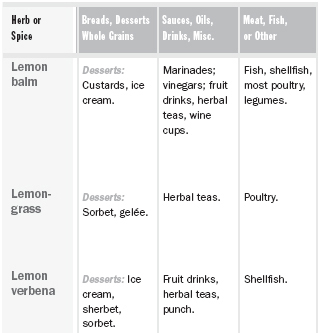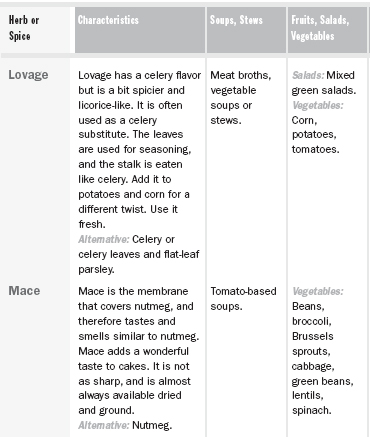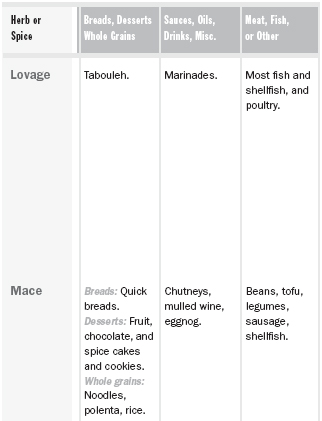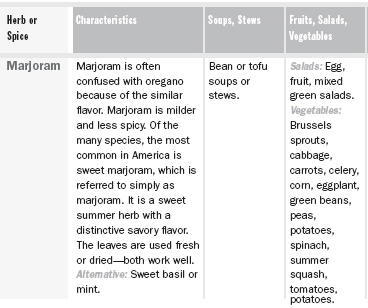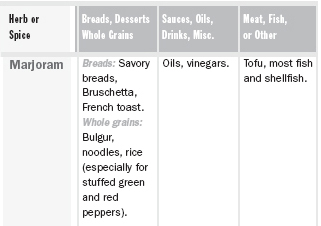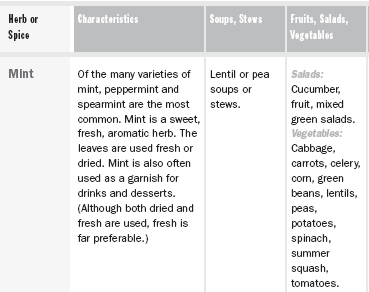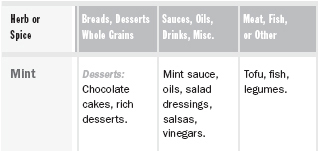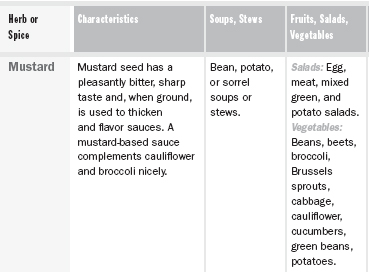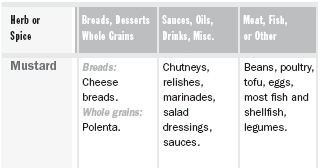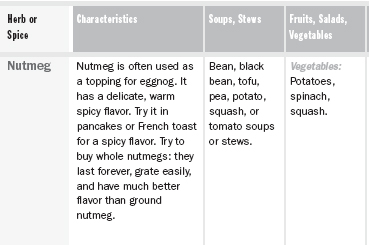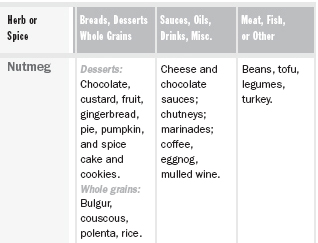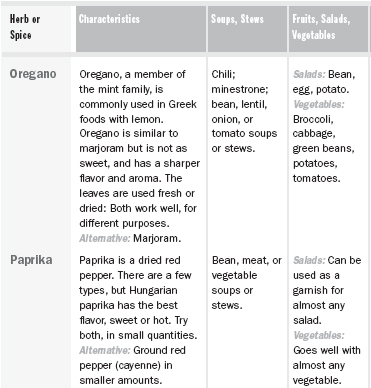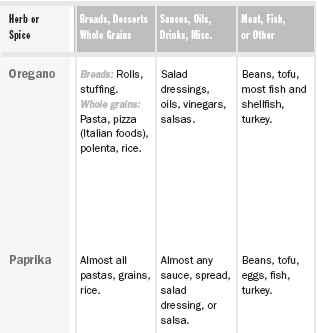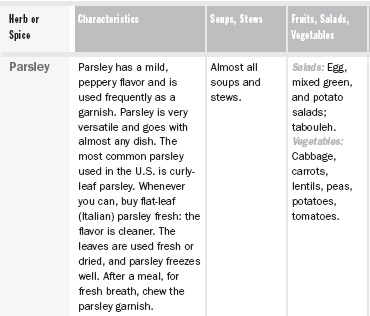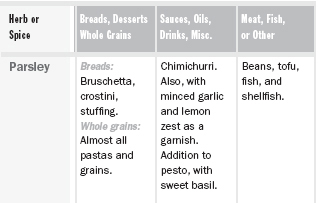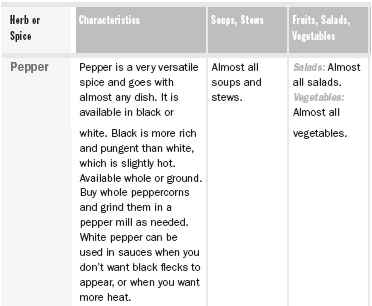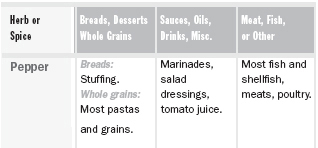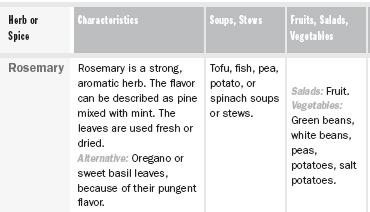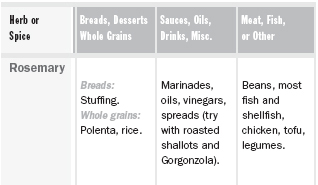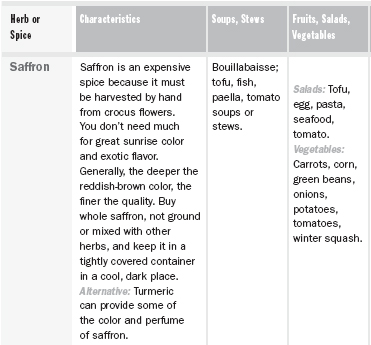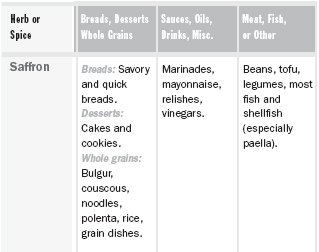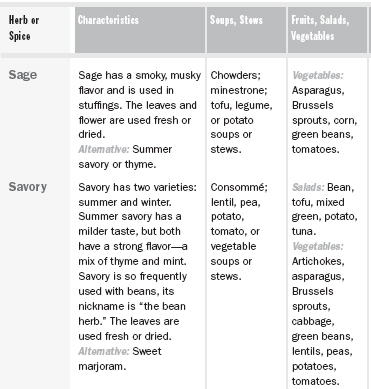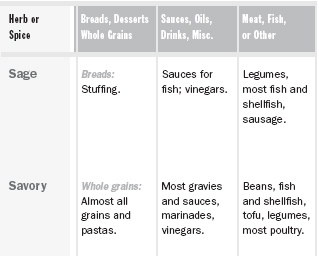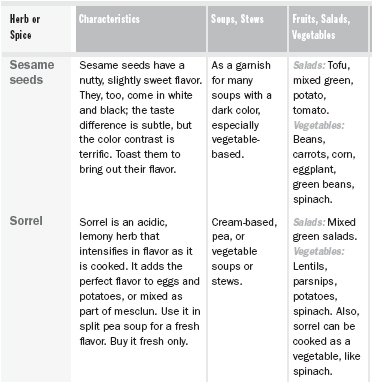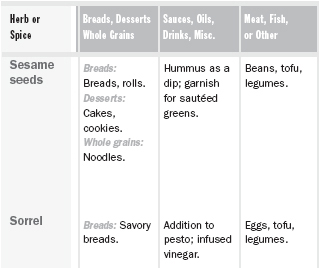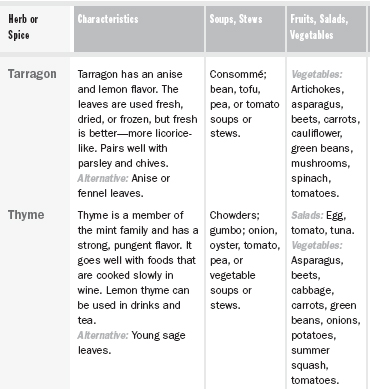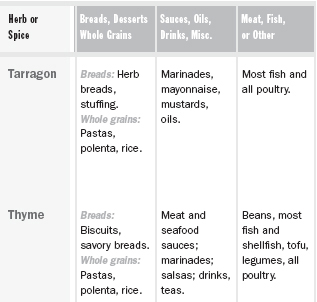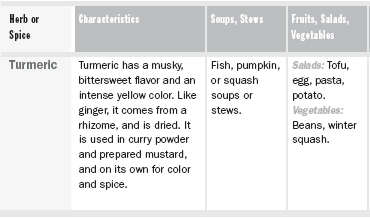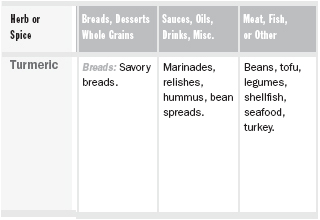The goal of the RealAge kitchen is to help you create great-tasting food that makes your arteries and immune system younger. In no way does a kitchen do this better than by having herbs and spices on hand. They accentuate food perfectly, turning merely “okay” dishes into truly delicious ones. Also, substituting the exciting taste of an herb for that of aging fat or a lot of salt is a smart way to make your RealAge younger while earning the title of great chef. This chapter shows some of the common and not-so-common combinations of herbs and spices that will make your dishes taste fabulous. Some of these herbs and spices are ones you can grow, which can enhance your pleasure, thus making your RealAge younger in two ways. But learning how to use herbs and spices to substitute for immune-system and artery-aging fats is the first step. Here’s how.
A RealAge-smart kitchen isn’t complete without herbs and spices. Herbs have been used for centuries for culinary and medicinal purposes. Chervil has a well-known association with French cuisine. Garlic is best known for its use in Mediterranean foods, and curry powder will suggest a Thai or an Indian flavor. While an herb is a leaf, a spice is usually a berry, seed, root, flower, stem, or pod. Sometimes we use both from the same plant. For example, I use the leaf (herb) from Chinese parsley (which is called cilantro) and the seed (spice) from the same plant (which is called coriander). They are wonderful together or apart, in the same dish or in separate dishes!
Fresh herbs are usually used at the end of cooking or as a garnish. Choose fresh herbs that have a bright color and firm leaves. Fresh herbs should be washed in cold water and blotted dry. To store herbs, cut ½ to 1 inch from the end of the stems and place them in a glass of water in the refrigerator. You can also store the leaves rolled in a moist paper towel in the vegetable compartment of your refrigerator. They should stay fresh for about five days. We hope you’ll be using them frequently in your RealAge kitchen—any leftovers can be quickly chopped and frozen. We think herbs are key to making RealAge food taste fabulous.
Herbs can be dried for later use or for decoration. Just tie small bunches together and place them upside down in a paper bag that has been punctured with holes. The top of the bag should be tied tight and hung in a warm, airy place. (The bag prevents light from ruining the leaves and catches the leaves that drop.) Dried herbs are more potent than fresh herbs and generally (but not always) should be added at the beginning of cooking.
Store dried spices and herbs in airtight glass containers in a cool, dry place. They should last about six months. The general rule for substituting fresh herbs and dried herbs in a recipe is to use ½ teaspoon of ground dried herbs or 1 teaspoon of dried leaves for every 1 tablespoon of finely chopped fresh herb required. Buy just enough dried herbs for a six-month supply—usually found in a small jar or tin in the supermarket. (The bigger containers may look like a better value, but they’re not if the herbs and spices are kept too long and go stale.)
Three Good Rules for Herbs and Spices
Here are three good, general rules regarding the use of herbs and spices in food. Using any of them adds to your Kitchen IQ points.
- Herbs are best fresh; spices are best dried (1 Kitchen IQ point). If you can find an herb fresh, use it. If you can find spices dried, use them.
- Use the memory aids “Fresh-quick-fresh” and “Dried-slow-dried” (1 Kitchen IQ point). If your food is fresh and cooked only briefly, use fresh herbs. If your food started out as dried (from beans and legumes, for example) or is to cook for more than a few minutes, use dried herbs and spices.
- More of the same color is better. If you have more than one herb or spice of the same color, and want to use them both, go ahead and try. Often herbs or spices of the same color complement each other and make the dish taste even better.
Growing Your Own Herbs
If you have considered a vegetable garden but don’t have the space or don’t feel up to the challenge, by all means try growing herbs. Herbs and spices are relatively easy to grow—many started out as weeds that were tasted by a few brave souls. After none of these testers became seriously ill, the herbs worked their way into cooking.
You can keep an herb garden and fresh herbs always at hand for cooking with just a small amount of space, such as an interior windowsill. Herbs do well in almost any soil, and take few nutrients from the soil. Although an inside kitchen windowsill may seem like the easiest place for a potted herb or two, keep an eye on it; some herbs wilt with the heat of the kitchen and would rather be outdoors.
As with any indoor plant, you must guard against overwatering. Soak the herbs once or twice a week and make sure the pots have good drainage. If you live in an arid climate, you might also want to mist the leaves. Putting the pots outside during the summer helps the plants become hardy and extends their lives. Many herbs are annuals, and must be planted anew each year. All of the following are excellent candidates for an indoor herb garden: basil, coriander, thyme, rosemary, and sage. Almost all fresh herbs freeze well. Just cut whole sprigs and wrap them tightly in a double layer of plastic wrap.
The RealAge Herb and Spice Chart
The following chart shows the herbs and spices we keep on our shelves and use in our recipes. We have suggested pairings for each herb and spice. Sometimes we’ve suggested alternatives: you may want a related but slightly different flavor, or, you may need a substitute. These are some favorites, but feel free to experiment with others. Expand your horizons and start making food more exciting and flavorful.
